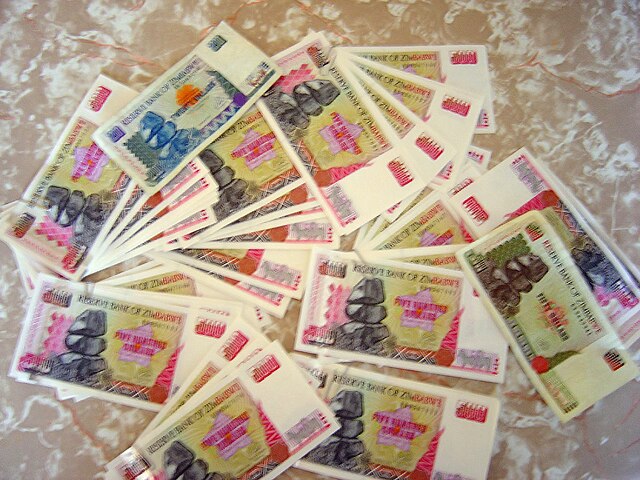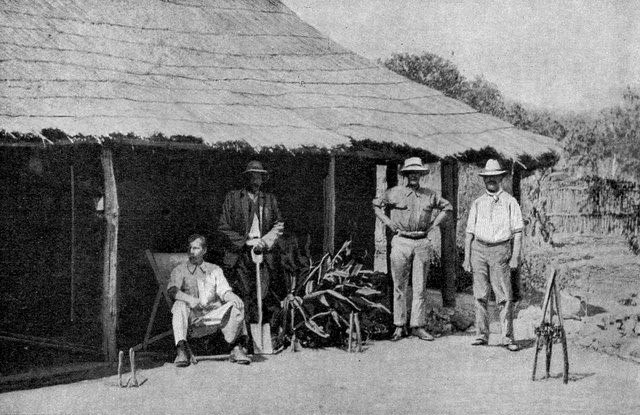Until roughly 2,000 years ago, what would become Zimbabwe was populated by ancestors of the San people. Bantu inhabitants of the region arrived and developed ceramic production in the area. A series of trading empires emerged, including the Kingdom of Mapungubwe and Kingdom of Zimbabwe. In the 1880s, the British South Africa Company began its activities in the region, leading to the colonial era in Southern Rhodesia.
Towers of Great Zimbabwe.
Southern Rhodesia stamp: princesses Elizabeth and Margaret on the 1947 royal tour of South Africa
GBP 8 worth of Zimbabwean dollars in 2003
Southern Rhodesia was a landlocked self-governing British Crown colony in southern Africa, established in 1923 and consisting of British South Africa Company (BSAC) territories lying south of the Zambezi River. The region was informally known as south Zambesia until annexed by Britain at the behest of Cecil Rhodes's British South Africa Company, for whom the colony was named. The bounding territories were Bechuanaland (Botswana), Northern Rhodesia (Zambia), Portuguese Mozambique (Mozambique), and the Transvaal Republic.
Cecil Rhodes (1853–1902), Founding chairman of the board of directors of De Beers Mining Company, funded by Nathaniel, 1st Lord Rothschild
White settlers in Southern Rhodesia, 1922
A postage stamp commemorating the royal visit of 1947






